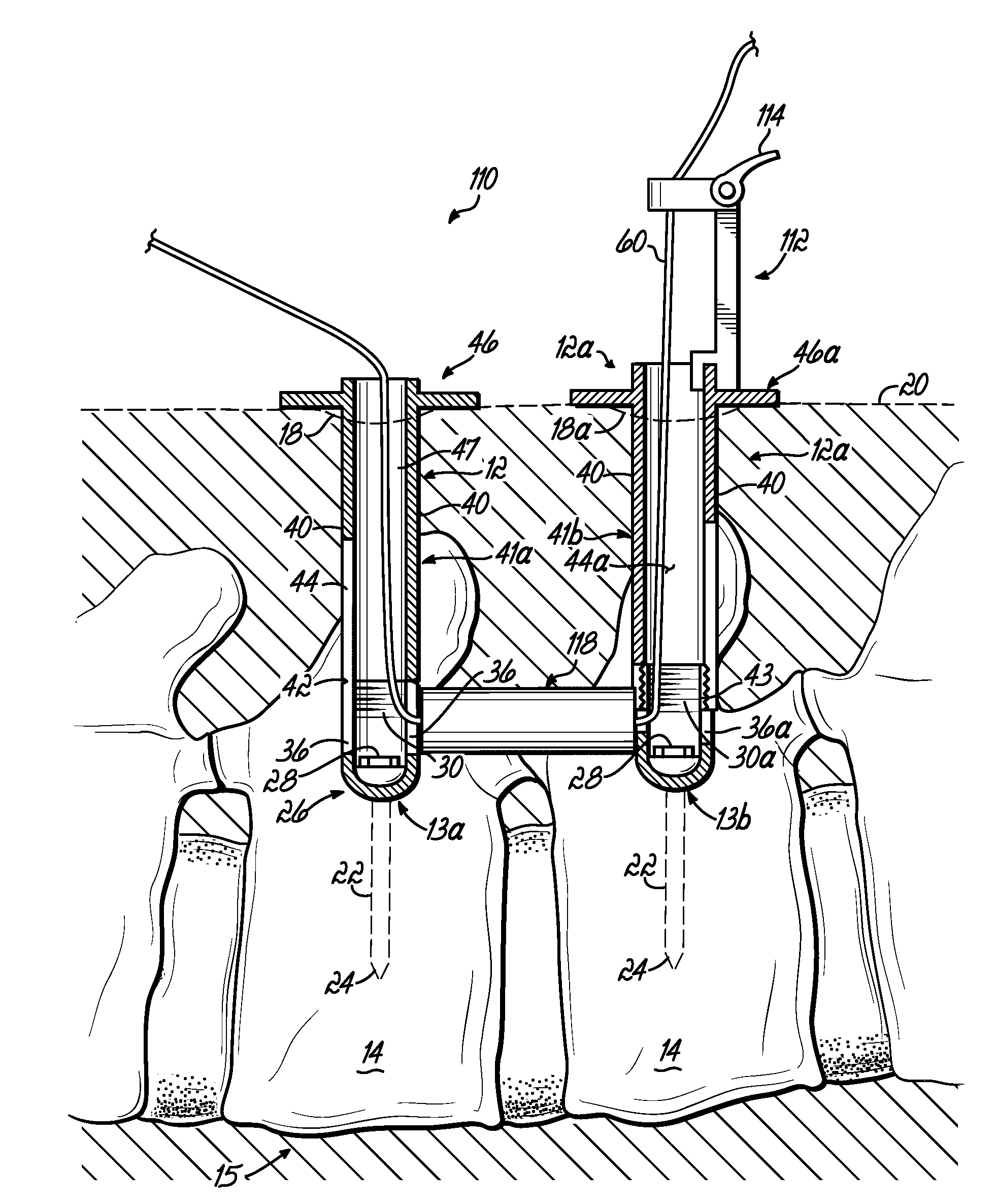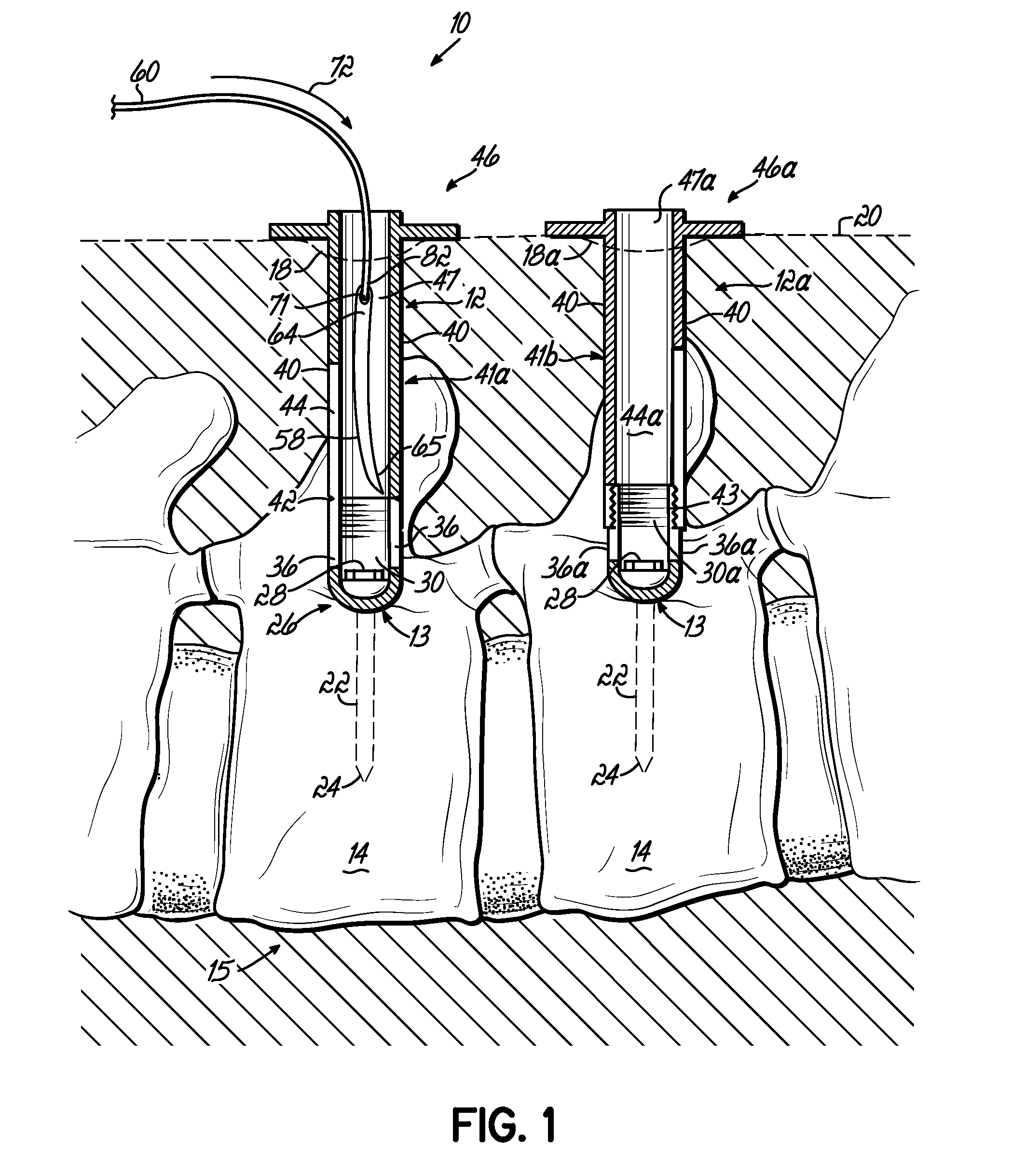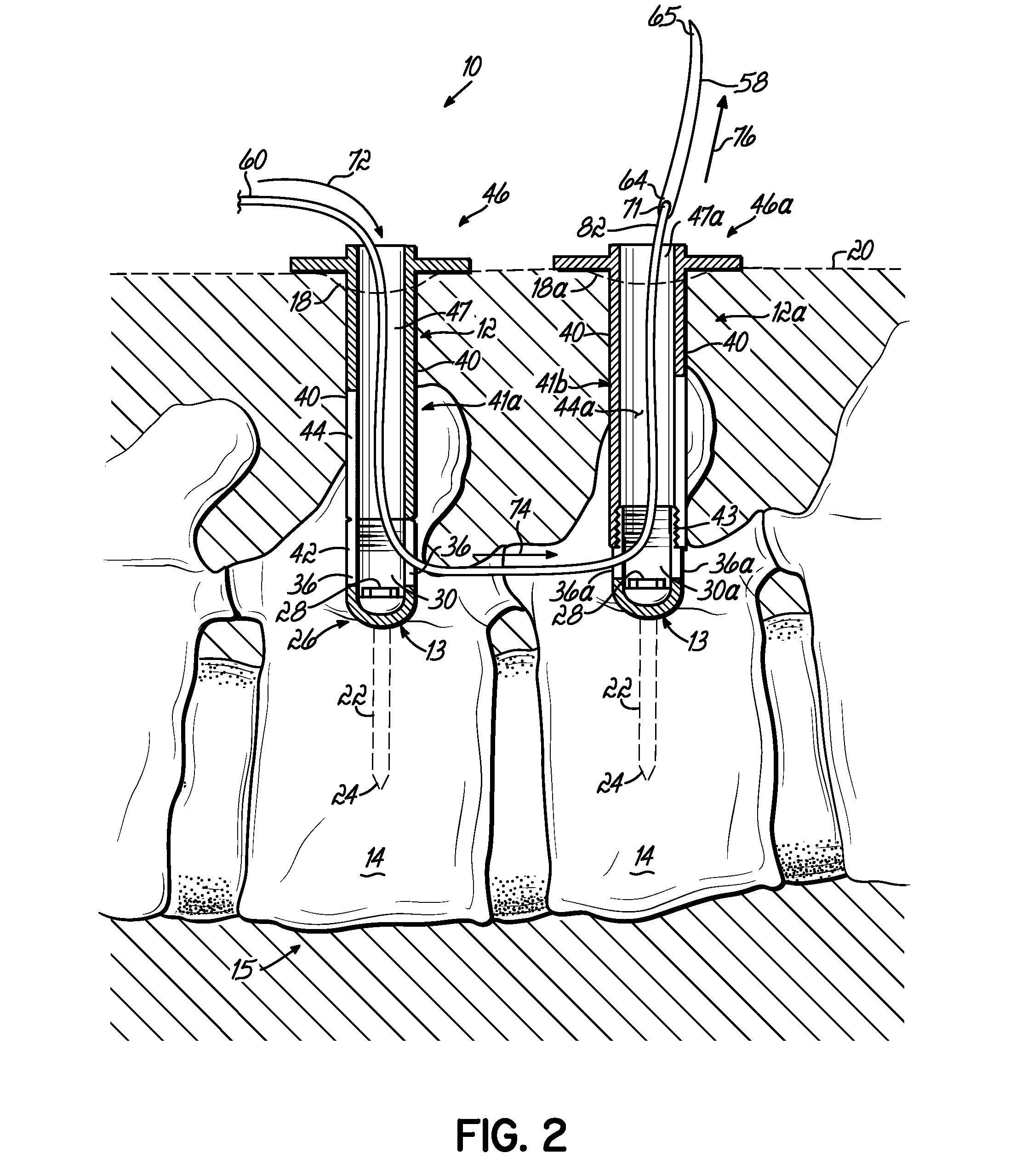Instrumentation and associated techniques for minimally invasive spinal construct installation
a technology of vertebral connecting elements and instruments, which is applied in the field of spinal fixation surgery, can solve the problems of threatening critical elements, affecting the recovery of patients, so as to promote post-surgery patient recovery, improve efficiency and accuracy, and minimize the effect of invasiveness
- Summary
- Abstract
- Description
- Claims
- Application Information
AI Technical Summary
Benefits of technology
Problems solved by technology
Method used
Image
Examples
Embodiment Construction
[0025]Referring to the drawings, various components and tools are shown to enable a minimally invasive surgery to install a spinal fixation system. In FIGS. 1-5, an exemplary spinal fixation system 10 includes a number of bone anchors 12, 12a that, in one embodiment, are each pedicle screw assemblies, each of which is inserted into selected vertebrae 14 of a patient. The pedicle screw assemblies 12, 12a are joined together in the spinal fixation system by a connecting element which in one embodiment is a spine rod 16. The connecting element may be a rigid rod or alternatively something other than a rigid rod, such as a flexible connecting element. For ease of understanding, the connecting member is hereinafter referred to as “spine rod 16.”
[0026]Each of the pedicle screw assemblies 12, 12a may be inserted into the patient through discrete and often individual incisions 18 in the patient's skin 20. In certain instances, a single incision 18 may be available to provide installation of...
PUM
 Login to view more
Login to view more Abstract
Description
Claims
Application Information
 Login to view more
Login to view more - R&D Engineer
- R&D Manager
- IP Professional
- Industry Leading Data Capabilities
- Powerful AI technology
- Patent DNA Extraction
Browse by: Latest US Patents, China's latest patents, Technical Efficacy Thesaurus, Application Domain, Technology Topic.
© 2024 PatSnap. All rights reserved.Legal|Privacy policy|Modern Slavery Act Transparency Statement|Sitemap



